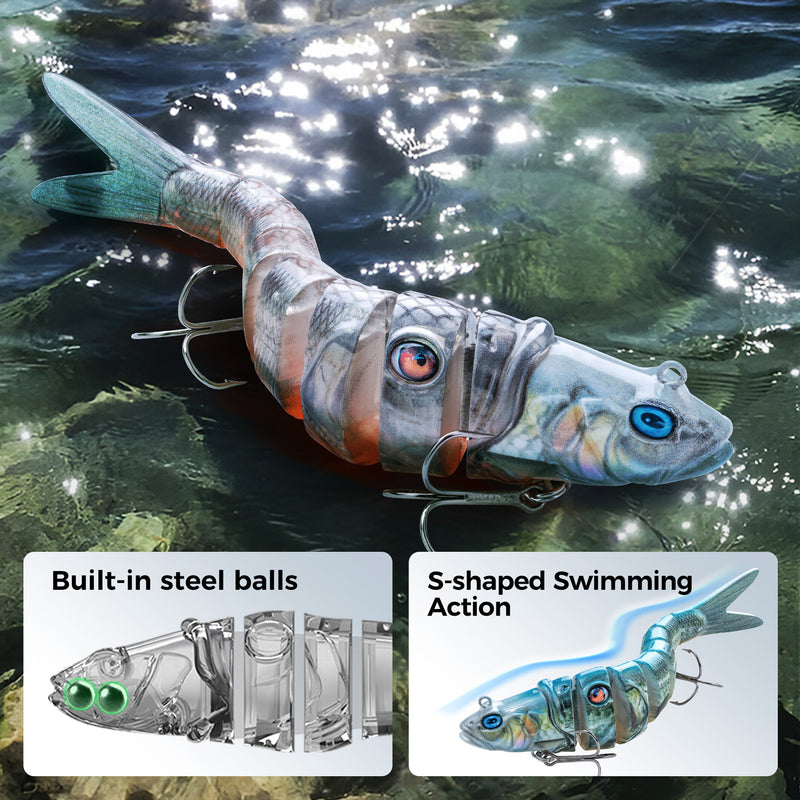Unlock the Secrets of Saltwater Lures: Master the Art of Fishing Today!
Saltwater fishing is an exhilarating experience that many anglers dream of. The vast and unpredictable ocean offers a unique challenge that can lead to incredible rewards. One of the critical components of successful saltwater fishing is the use of the right lures. Saltwater lures are specifically designed to attract a variety of fish species, maximizing your chances of a great catch. With so many options available, it’s essential to understand how each type functions and when to use them. In this article, we will explore the fascinating world of saltwater lures, their diverse types, and best practices to enhance your fishing adventures.

Understanding Saltwater Lures
Saltwater lures are artificial baits crafted to mimic the appearance and movement of prey, enticing fish to strike. Unlike freshwater lures, which may be designed for calmer waters and different species, saltwater lures are built to withstand the harsher conditions of the ocean. This includes being more robust and resistant to corrosion from saltwater. Key features that make a lure effective in saltwater environments include their size, color, and action. For instance, a lure that mimics a distressed baitfish can trigger predatory instincts in larger fish, increasing the likelihood of a successful catch. Understanding these differences is crucial for any angler looking to make the most of their saltwater fishing experience.
Types of Saltwater Lures
When it comes to saltwater lures, there is a wide array of options available, each with unique characteristics and uses. Here are some of the most popular types:
1. Jigs
Jigs are a staple in saltwater fishing, known for their effectiveness in various scenarios. They consist of a weighted head with a hook and are designed to be bounced along the ocean floor. This mimics the movement of bottom-dwelling prey, making them particularly appealing to species like flounder and snapper. A personal story from a friend highlights their effectiveness; during a recent fishing trip, he switched to a jig after hours of using other lures and immediately started catching fish.
2. Topwater Lures
Topwater lures are designed to float on the surface, creating splashes and commotion that attract fish. They are especially effective in low-light conditions like dawn or dusk. The thrill of seeing a fish explode on the surface is unparalleled. I remember a day spent fishing with my uncle, who swore by his favorite topwater lure. The excitement that followed each strike was contagious and made for an unforgettable experience.
3. Soft Plastics
Soft plastics are incredibly versatile and come in various shapes, sizes, and colors. They can be rigged in multiple ways, such as Texas or Carolina rigs, and are effective for species like redfish and trout. Their realistic movement in the water can fool even the most cautious fish. A friend of mine often uses soft plastics during his fishing trips, and he swears by their effectiveness in both calm and turbulent waters.
4. Spoons
Spoons are another classic choice in saltwater fishing. Their reflective surfaces mimic the scales of baitfish, making them enticing to predatory species. They are particularly effective when retrieved at varying speeds to simulate a distressed fish. I recall a fishing outing where spoons were the go-to lure, and we caught a variety of fish, showcasing their effectiveness in the right conditions.
5. Trolling Lures
Trolling lures are designed to be pulled behind a moving boat, covering large areas of water and attracting fish that are often found in deeper waters. These lures come in various shapes and sizes, mimicking different types of prey. They are best used in offshore fishing scenarios, where fish are scattered across vast distances. A memorable trip with my buddies involved trolling lures, and we ended up catching some impressive species, showcasing the excitement and effectiveness of this method.
Best Practices for Using Saltwater Lures
To maximize your success with saltwater lures, it’s essential to select the right lure based on the fishing conditions. Factors such as water clarity, weather, and the type of fish you’re targeting play a significant role. Bright colors may work well in murky waters, while natural hues are often more effective in clear conditions. Additionally, the size of your lure should correspond to the size of the local baitfish. Techniques for casting and retrieving lures also vary; a slow, steady retrieve can be effective for some lures, while others may require a quick erratic motion to entice a strike. Personal experimentation and observation can help you discover the most effective methods for your fishing adventures.
Enhancing Your Saltwater Fishing Experience
In conclusion, understanding the different types of saltwater lures and best practices for their use can significantly enhance your fishing experience. With a variety of lures at your disposal, it’s important to experiment and find what works best for you in different conditions. Whether it’s the thrill of topwater action or the subtlety of a soft plastic, each lure has its place in the angler's toolkit. So, grab your gear, hit the water, and enjoy the art of saltwater fishing!








